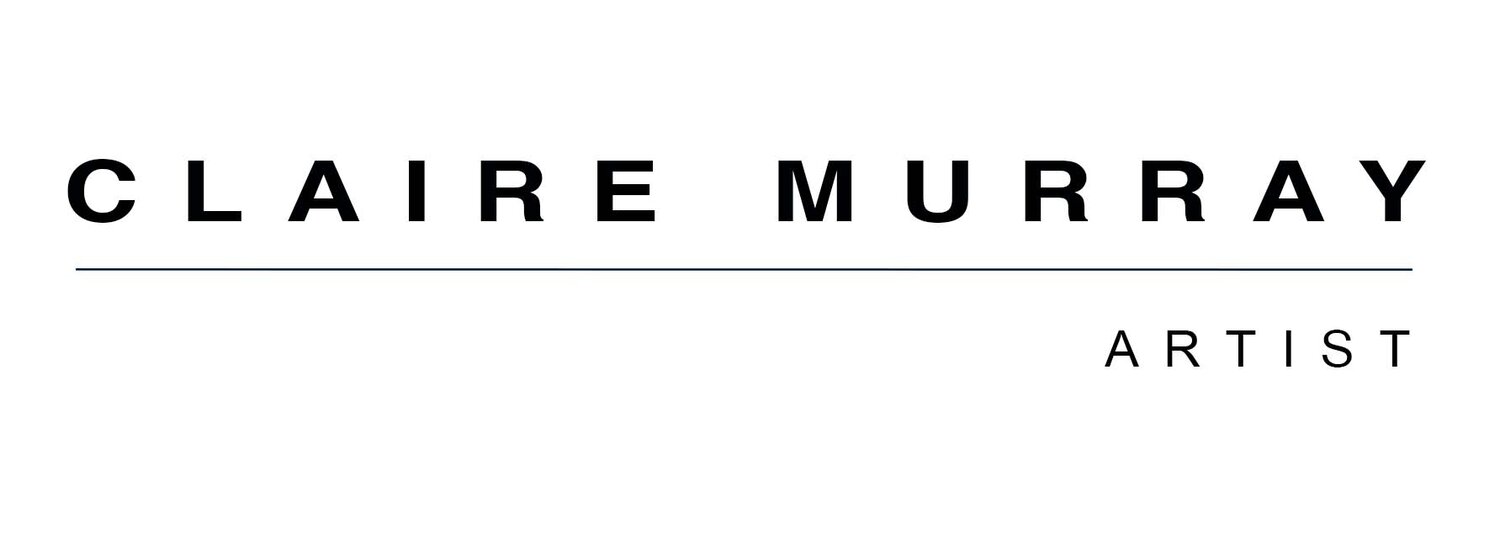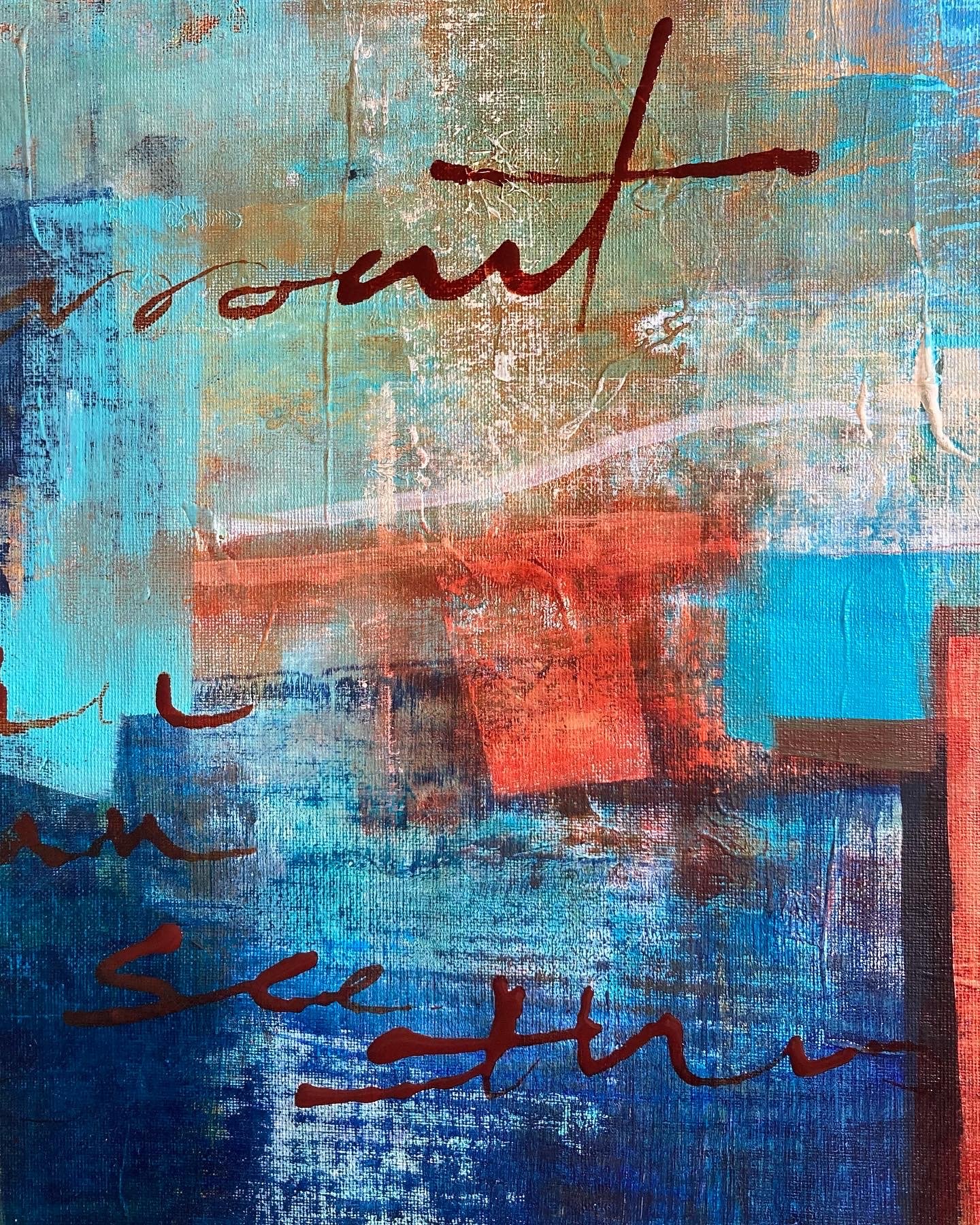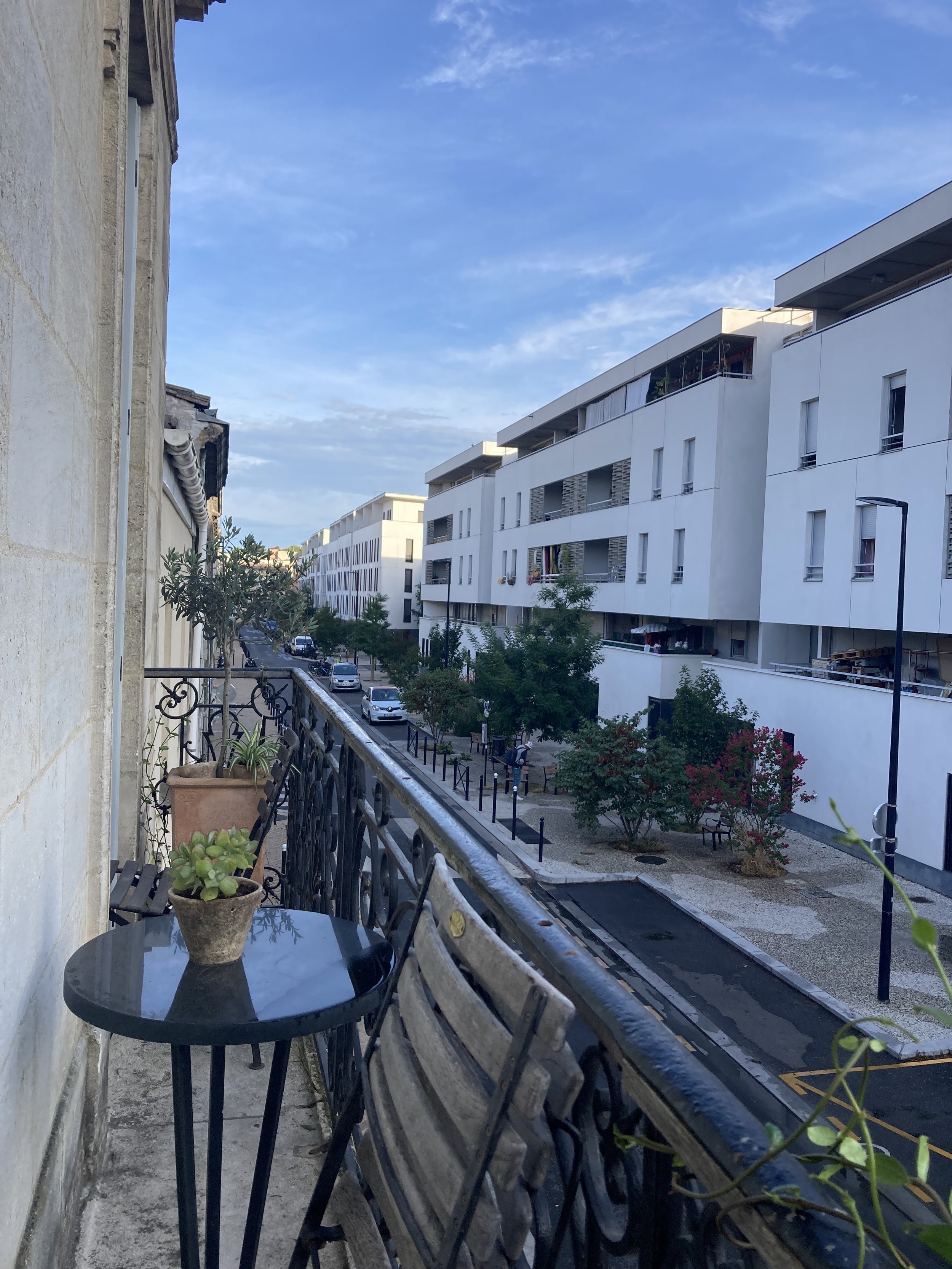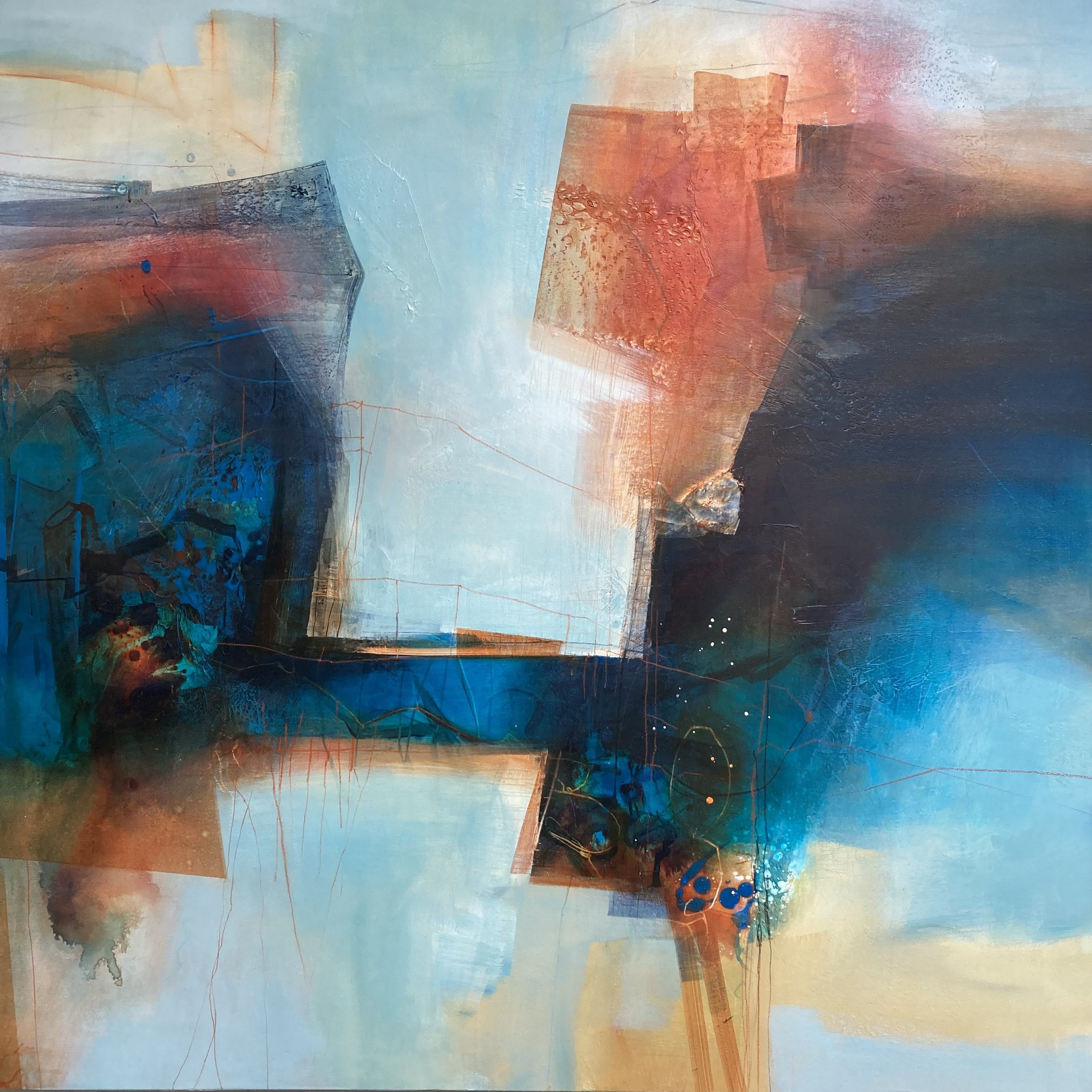A painting conceived with energy and passion, and a sense of urgency. Sunlit Uplands was created in southern France during my week-long residency at Studio Faire, Nérac, where I immersed myself in a garage studio, connecting ideas around environment, climate, freedom of movement, borders, and, increasingly, political concerns.
Sunlit Uplands, acrylic on canvas, approx 90x300cm (unstretched)
Sunlit Uplands, is a long painting, almost panoramic in its format, stretching some 3m across. Sunlit Uplands is a warm and friendly phrase (often used by politicians to sell the idea of Brexit), conjuring up the best possible image of a utopian society, better times ahead and golden promises. The painting was painted with a combination of transparent liquid paints initially, then painted into with dry brush strokes and pale, opaque colours, layering text and contrasting values together.
At the time of painting (August 2022), the south of France was suffering the effects of its fourth heatwave of the summer, and water was scarce. The harsh, hot summer this year had left its mark on the landscape, which looked scorched, barren and dusty, the colours bleached, pale and brittle. I was struck by the collision of unusually hot air, tinder dry foliage, potential for fire, the snapping of parched stalks underfoot, and the shrinking of reservoirs, disappearing rivers and streams. The scorched, pale landscape was peppered with field upon field of crispy, dead sunflowers, still facing the sun, creaking and drying out until harvest, and punctuated with bright turquoise/green algae filled irrigation ponds.
Woven into the layers of paint are partly legible fragments of text, in English and French. Referring to Germany’s Hunger Stones, carved stones at the bed of a river, revealed for the first time this summer since 1616, during a past time of harsh drought. The words, ‘If you can see this, weep’ are partly legible, and excerpts from the writings of a fellow resident at Studio Faire, Parisian writer Charlotte Pallieux, her powerful and highly personal words from her current book draft.
There is a lot of activity in the centre left of the painting, and walking from left to right, there is a sense of rhythm that starts fairly quietly, rises to an active and busy area, before petering out at that right of the painting. The last ‘punctuation’ mark is a block of strong cerulean turquoise in the far-right bottom corner, bringing the painting to a full stop.
The garden at Studio Faire provided additional opportunities to interact with the landscape; there were black walnut trees, quince, vines and herbs. Interestingly there were old taps and an ancient well outside, both long dry and now ornamental. Unusually for me, Sunlit Uplands was an unstretched piece of canvas, portable and malleable to be rolled for the journey home (its working title was actually Journey), and allowed me to move the painting around the studio, working over different surfaces and in changing light. At one point, in the studio, I was working over a join between stone and old floorboard, picking up traces of texture in my brush marks form the surface below. The fabric and history of Studio Faire is in this piece.
Exploring the painting outside was an interesting exercise in ‘seeing’ it in a different context, in the natural light, and amongst grasses , trees and external structures. The colours were enhanced by the summer light in southern France, and it has occurred to me to repeat the exercise here in Yorkshire, perhaps in the woods, to explore the idea of context further.
Next blog - new pieces generated by my experiences at Studio Faire




















